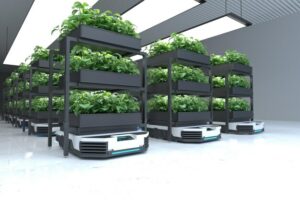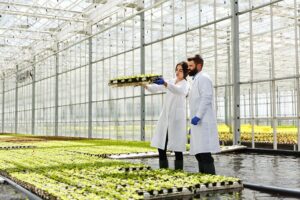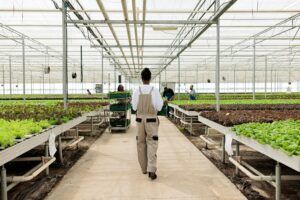Growing Up Green: The Promise of Renewable Energy in Vertical Agriculture

Vertical farming is a modern agricultural technique that involves growing crops in vertically stacked layers. This technique has been gaining popularity in recent years due to its ability to produce high yields of crops in a small space. However, one of the significant concerns with vertical farming is its energy consumption. In this article, we will explore the potential of renewable energy sources to power vertical farms and examine how this innovative approach to agriculture can contribute to a more sustainable future.
Traditional farming methods face numerous challenges, including the depletion of arable land, unpredictable weather patterns, and a growing global population. Vertical farming offers a solution by utilizing controlled-environment agriculture (CEA) technologies such as hydroponics, aeroponics, and aquaponics. These systems allow crops to be grown indoors, reducing the impact of external environmental factors and providing a more controlled and optimized growing environment.
While vertical farming presents a compelling solution to traditional farming challenges, concerns about energy consumption have been raised. Indoor farming requires artificial lighting, heating, and cooling systems, all contributing to significant energy demands. The industry must transition towards renewable energy sources to sustain vertical farming.

Renewable Energy Integration:
Several renewable energy sources hold promise for powering vertical farming operations:
Solar Power: Integrating solar panels on vertical farming structures can harness the abundant energy from the sun. Solar power can generate electricity for lighting systems, climate control, and other energy-intensive processes.
Wind Power: Wind turbines can generate clean energy in regions with consistent wind patterns. This energy can power vertical farming facilities, reducing reliance on traditional grid systems.
Biogas and Biomass: Organic waste generated from vertical farming can be converted into biogas or biomass, providing a renewable energy source. This closed-loop system not only reduces waste but also contributes to the overall sustainability of the farming operation.
Hydropower: Vertical farms can leverage hydropower systems, especially in locations with access to flowing water. Hydroelectricity can be harnessed to meet the energy needs of vertical farms, making them more environmentally friendly.

Despite the potential of renewable energy integration in vertical farming, challenges exist. Initial implementation costs, technological limitations, and regional variations in renewable energy availability are among the obstacles that must be addressed. However, ongoing advancements in renewable energy technologies and government incentives for sustainable farming practices could facilitate the transition to a greener energy model for vertical farms.
Vertical farming has the potential to revolutionize the way we grow crops and feed the world. While energy consumption is a concern, renewable energy sources like wind turbines can be used to power vertical farms and make them more sustainable. With further research and development, vertical farming could become a vital component of a sustainable food system, addressing the challenges of traditional agriculture and contributing to a more resilient and environmentally friendly future.